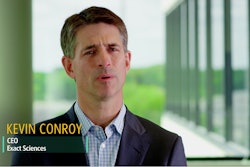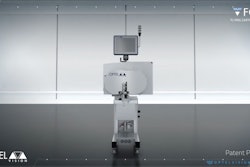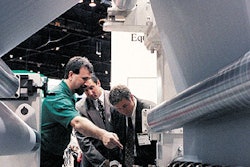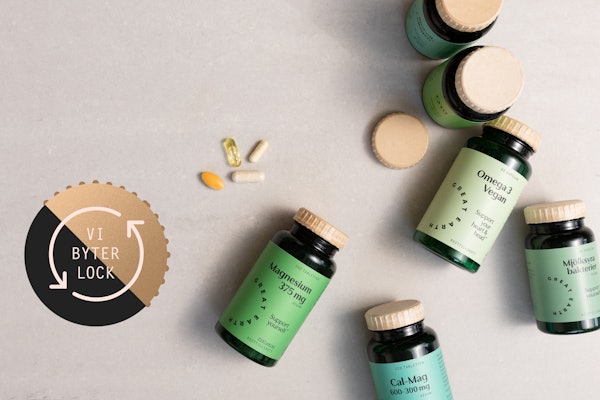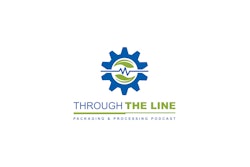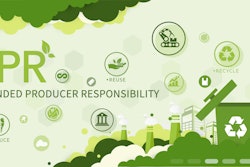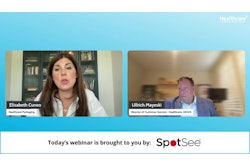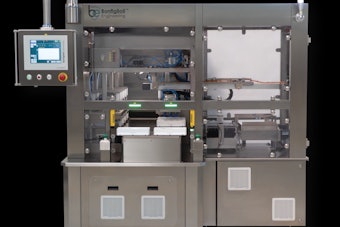Supply chain resiliency and flexibility are essential to a company that faces the kind of global competition that prescription drug maker Eli Lilly & Co. faces. The firm must be operationally agile enough to scale capacity according to changing market demands. Arrangements with firms that contract manufacture and package are also a great help.
The perspective comes from Mark Hughes, automation consultant for Indianapolis-based Eli Lilly. Hughes discussed these topics during his presentation, "Packaging as an integrated process (not just a line of connected machines)," at the recent Packaging Automation Forum (www.packworld.com/paf).
Another strategy, he said, is to keep the making and packaging of newly developed drugs in a Lilly facility and outsource the making and packaging of a mature drug. This frees up capacity for the next drug the firm plans to generate.
"For a long time, our status quo around equipment purchasing was to buy the best machine to do whatever particular task we wanted," he told the PAF audience. "The best cartoner, labeler, case packer, palletizer, and so on. But the equipment that is considered 'best' changes from site to site, so in 13 core sites, even where the exact same product is being packaged to the same specifications, we might have been doing it 13 different ways. This site-based delivery of solutions that are unique problem-solving exercises every single time no longer [works] for us. We can't afford this model any longer. Cost pressures in the pharmaceutical industry are starting to look like cost pressures in other businesses. We are being forced to be much more efficient."
Hughes acknowledged that when it comes to packaging proficiency, Lilly is probably a bit behind today's leading consumer packaged goods (CPG) companies. But that's primarily because earnings in the pharmaceutical industry come from better molecules and better chemistry. Consequently, Lilly has invested relatively little in the packaging side of its business and far more in chemistry.
"We are, however, very integrated from an information standpoint," said Hughes. "We've adopted the ISA engineering standard S95, which identifies appropriate layers of functionality in your manufacturing information architecture, where that functionality ought to reside, and why it should reside there. Equipment, for us, plugs in at levels zero and one [see Figure 1]. We not only standardize on functionality, but we've also standardized on business partners that deliver that functionality for us.
"For example, on the bulk side of our business, we're standardized on our SCADA and control system with Emerson's [www.easydeltav.com] Delta V platform and product. By standardizing this way, we migrate with Emerson over time as they develop their technology. It means we're partnered at a business relationship level, not a technology platform level, because if you do that, you will chase technology platforms forever. We assume Emerson knows what it's doing in the controls space on the bulk side, and as they move the platform as it serves their business, we'll stay aligned with them.
"On the packaging side, we have a similar strategy in that we've standardized on a platform there as well. All of our sites, globally, have this same manufacturing architecture as their goal. I can't point to a single site that has been able to implement this goal completely, nor do I ever expect to. But it is a strategy we are looking for."
Hughes believes the pharmaceutical industry has been very good at dealing with force, mass, and energy. "In another words," he said, "we can move the packs as fast as you want, we can print on them, we can get them palletized, we can get them out there. What we've struggled with, and continue to struggle with, is how to manage the right, appropriate information to make the decisions we need to make about the packaging line. If I want information about Line 13, I have no way of getting it unless I go out to that line and monitor its performance."
This is a serious shortcoming, said Hughes, because from a business perspective, the important question is not "How is the labeler running" but rather "How is Line 13 running?"
"My reason for emphasizing this is that I don't deliver machines to the organization," he said. "Rather, I install lines that deliver capability to the organization. Individual machines are only important to me as they fit into a line. And from an integrated architecture standpoint, those same machines are only valuable to me as they plug into my integrated information architecture. My plea to the builders of packaging machinery is that I need your systems to be integrateable into my systems and into my architecture. I don't need you to figure out how to put a data historian on your machine and give me reports. That actually makes my job much harder. If your machine comes completely self-sufficient, has an OEE [overall equipment effectiveness] package on it, or generates productivity reports, I now have to integrate that complexity into my overarching system, and so you have honestly done me no favors. I understand the drive to do that, to be a standalone piece of equipment. But that piece of equipment is part of a line. If you're selling me the entire line, knock yourself out. But if you're providing a labeler or cartoner and there are four other machines in the line beside them, my responsibility is the entire line. Sub-optimizing any individual piece of equipment in that line only complicates my life."
The final portion of Hughes' presentation addressed the pharmaceutical industry's need to uniquely serialize every saleable unit so that it can be readily known when and where it was made, who made it, and who has handled it throughout the distribution chain. The requirement to have such serialization in place is driven largely by the California Board of Pharmacy (www.pharmacy.ca.gov), though other states as well as players at the federal level are also making noise.
"The problem I see developing as serialization strategies develop is this: We have too many unique pieces of equipment with unique inspection criteria and unique reject stations on 55 lines across the country," said Hughes. "In printing on a carton, I have 55 ways of doing it and 55 ways of rejecting cartons that need to be rejected. When I get to the case level, I have 55 different ways of making my cases, and at palletizing, I may have another 55 different pieces of equipment. That requires too much time spent on unique integrations when what's really called for is a global solution, where I develop a standard approach to managing these serial numbers, distributing them, and printing them. Then, as technology or legislation changes, I could upgrade my global solution rather than having to modify a multitude of unique solutions."
What Hughes asked packaging machinery builders to do was to think about unique serialization information as information that's owned not just by their machine, but by the enterprise buying the machine.
"As serialization rolls toward you from customers in the pharmaceutical industry, I implore you not to solve their serialization problems uniquely or in a machine-centric way," said Hughes. "Don't be overly helpful when it comes to that cartoner, for example. A global solution is what's called for."
Read more about machinery automation at www.healthcarepackaging.com/go/32
-By Pat Reynolds, Editor, Packaging World
The perspective comes from Mark Hughes, automation consultant for Indianapolis-based Eli Lilly. Hughes discussed these topics during his presentation, "Packaging as an integrated process (not just a line of connected machines)," at the recent Packaging Automation Forum (www.packworld.com/paf).
Another strategy, he said, is to keep the making and packaging of newly developed drugs in a Lilly facility and outsource the making and packaging of a mature drug. This frees up capacity for the next drug the firm plans to generate.
"For a long time, our status quo around equipment purchasing was to buy the best machine to do whatever particular task we wanted," he told the PAF audience. "The best cartoner, labeler, case packer, palletizer, and so on. But the equipment that is considered 'best' changes from site to site, so in 13 core sites, even where the exact same product is being packaged to the same specifications, we might have been doing it 13 different ways. This site-based delivery of solutions that are unique problem-solving exercises every single time no longer [works] for us. We can't afford this model any longer. Cost pressures in the pharmaceutical industry are starting to look like cost pressures in other businesses. We are being forced to be much more efficient."
Hughes acknowledged that when it comes to packaging proficiency, Lilly is probably a bit behind today's leading consumer packaged goods (CPG) companies. But that's primarily because earnings in the pharmaceutical industry come from better molecules and better chemistry. Consequently, Lilly has invested relatively little in the packaging side of its business and far more in chemistry.
"We are, however, very integrated from an information standpoint," said Hughes. "We've adopted the ISA engineering standard S95, which identifies appropriate layers of functionality in your manufacturing information architecture, where that functionality ought to reside, and why it should reside there. Equipment, for us, plugs in at levels zero and one [see Figure 1]. We not only standardize on functionality, but we've also standardized on business partners that deliver that functionality for us.
"For example, on the bulk side of our business, we're standardized on our SCADA and control system with Emerson's [www.easydeltav.com] Delta V platform and product. By standardizing this way, we migrate with Emerson over time as they develop their technology. It means we're partnered at a business relationship level, not a technology platform level, because if you do that, you will chase technology platforms forever. We assume Emerson knows what it's doing in the controls space on the bulk side, and as they move the platform as it serves their business, we'll stay aligned with them.
"On the packaging side, we have a similar strategy in that we've standardized on a platform there as well. All of our sites, globally, have this same manufacturing architecture as their goal. I can't point to a single site that has been able to implement this goal completely, nor do I ever expect to. But it is a strategy we are looking for."
Hughes believes the pharmaceutical industry has been very good at dealing with force, mass, and energy. "In another words," he said, "we can move the packs as fast as you want, we can print on them, we can get them palletized, we can get them out there. What we've struggled with, and continue to struggle with, is how to manage the right, appropriate information to make the decisions we need to make about the packaging line. If I want information about Line 13, I have no way of getting it unless I go out to that line and monitor its performance."
This is a serious shortcoming, said Hughes, because from a business perspective, the important question is not "How is the labeler running" but rather "How is Line 13 running?"
"My reason for emphasizing this is that I don't deliver machines to the organization," he said. "Rather, I install lines that deliver capability to the organization. Individual machines are only important to me as they fit into a line. And from an integrated architecture standpoint, those same machines are only valuable to me as they plug into my integrated information architecture. My plea to the builders of packaging machinery is that I need your systems to be integrateable into my systems and into my architecture. I don't need you to figure out how to put a data historian on your machine and give me reports. That actually makes my job much harder. If your machine comes completely self-sufficient, has an OEE [overall equipment effectiveness] package on it, or generates productivity reports, I now have to integrate that complexity into my overarching system, and so you have honestly done me no favors. I understand the drive to do that, to be a standalone piece of equipment. But that piece of equipment is part of a line. If you're selling me the entire line, knock yourself out. But if you're providing a labeler or cartoner and there are four other machines in the line beside them, my responsibility is the entire line. Sub-optimizing any individual piece of equipment in that line only complicates my life."
The final portion of Hughes' presentation addressed the pharmaceutical industry's need to uniquely serialize every saleable unit so that it can be readily known when and where it was made, who made it, and who has handled it throughout the distribution chain. The requirement to have such serialization in place is driven largely by the California Board of Pharmacy (www.pharmacy.ca.gov), though other states as well as players at the federal level are also making noise.
"The problem I see developing as serialization strategies develop is this: We have too many unique pieces of equipment with unique inspection criteria and unique reject stations on 55 lines across the country," said Hughes. "In printing on a carton, I have 55 ways of doing it and 55 ways of rejecting cartons that need to be rejected. When I get to the case level, I have 55 different ways of making my cases, and at palletizing, I may have another 55 different pieces of equipment. That requires too much time spent on unique integrations when what's really called for is a global solution, where I develop a standard approach to managing these serial numbers, distributing them, and printing them. Then, as technology or legislation changes, I could upgrade my global solution rather than having to modify a multitude of unique solutions."
What Hughes asked packaging machinery builders to do was to think about unique serialization information as information that's owned not just by their machine, but by the enterprise buying the machine.
"As serialization rolls toward you from customers in the pharmaceutical industry, I implore you not to solve their serialization problems uniquely or in a machine-centric way," said Hughes. "Don't be overly helpful when it comes to that cartoner, for example. A global solution is what's called for."
Read more about machinery automation at www.healthcarepackaging.com/go/32
-By Pat Reynolds, Editor, Packaging World



